Introduction
Observation of children skills is a central competence of teachers in any subject, including mathematics. Teachers are expected to be aware of appropriate tools and strategies for testing children’s knowledge and skills in any circumstances. Moreover, teachers need to know the developmental milestones and Australian curriculum in order to understand what children should be able to do at the time of assessment. The present paper offers two cases of assessment of mathematical skills in preschoolers in different contexts. The evaluation uses appropriate criteria to evaluate the learning activities and performance of children. Additionally, recommendations are provided using relevant scientific literature and suggestions of the Australian curriculum.
Foundation Detour
Description of Child and Context
The interviewee is a five-year-old Indian girl, Shiesta, who silent in character and interested in mathematics. Even though some of the questions were unclear to her, her overall English mastery was sufficient. The assessment took place after lunch in the main room, where she spends most of her time with the group. During the assessment, three other children were interested in the activity. They were given some teddies to play with in order to avoid interruption. The teacher was present in the room; however, she did not participate in the assessment. After the procedure, the girl looked interested in playing with teddy bears.
Description and Analysis of Observations
The overall assessment of Shiesta’s performance is satisfactory since she demonstrated confidence while answering the majority of questions. She answered all the questions from F1 and F2 of the Mathematics Assessment Interview without any problems. This shows that the girl can establish an understanding of the language and processes of counting by naming numbers in sequences, which is central according to the Australian Curriculum, Assessment and Reporting Authority (ACARA, n.d.).
For F2 question (c), when she was asked to repeat the pattern, Shiesta became confused. However, the reason for the matter seemed to be the language barrier. When the question was rephrased, and the girl was asked “please, copy my teddies here,” the Shiesta immediately followed the instructions, and she could make the pattern keep going. According to Warren and Cooper (2006), the study of repeating patterns helps to generalise and discuss the idea of function and proportion.
However, according to Papic (2007), in order to maximise the effect from learning repetitive patterns, the schooling system “should focus on identifying, justifying and transferring various patterns, and using a variety of materials” (p. 12). Shiesta was also successful in comparison exercises, which is coherent with the Australian Curriculum since children should be able to compare between collections (ACARA, n.d.).
When asked question (f) in section F2, the ordinal number was incorrect. The primary reason for that may be that she did not understand the word “third.” According to Han and Thomas (2010), children with diverse cultural backgrounds may have difficulties understanding English. Shiesta could not answer questions (g) and (i) in F3 since she did not know the calculation. According to ACARA (n.d.), kindergarten students learn calculation only in Year 1. For ordering exercises, the girl could put three sticks from shortest to longest. However, when given four sticks, she was able to complete the task quickly. The problem may be in her needing some time to digest the question (Spilt, Koomen, & Harrison, 2015). In summary, even though the process was obstructed by Shiesta’s limited mastery of English, her skills were coherent with expectations.
Critique of Activities and Interactions
In general, the activities of the mathematics assessment interview are helpful for developing mathematical skills in preschool children. It covers the majority of competencies mentioned in the Australian curriculum (ACARA, n.d.). However, as mentioned above, the questions involving computations are to be omitted, since they are learned only during Year 1 (ACARA, n.d.). Moreover, the assessment does not include repeating the patterns of items different in something other than colour, which is recommended by Papic (2007). However, for the most part, the assessment tool seems adequate.
Even though the contents of the interview were appropriate, the expectations of the tool seem very high. McDonough and Clarke (2003) state that successful teachers “promote and value effort, persistence and concentration” (p. 265). However, a wide variety of tasks performed in close succession may disrupt preschoolers and hinder their ability to concentrate. It appears that children may experience difficulties in switching from one activity to another, which may interfere with their results. ACARA (n.d.) does not include fast switching from one type of tasks to another as a key competency. Therefore, it seems that either the questions are to be more homogeneous, or the assessment is to be performed for several days.
The utilized tool also did not consider any cultural differences in assessed children. As mentioned above, children with a diverse cultural background may experience difficulties in understanding the tasks and material due to insufficient knowledge of English (Han & Thomas, 2010). Therefore, the tool is to be adjusted to suit children with limited knowledge of the English language to adequately assess their progress. According to the Department of Education and Early Childhood Development (DoE, 2010), teachers and assessors can use physical models to help children understand the task. During the interview, the questions were explained using a variety of ways, which improved the performance.
Suggestions and Advice
The separation of the procedure into three days may be crucial for improving the performance of children. Additionally, before each section, it would be beneficial to make a short warm-up, during which the purpose of the tasks is explained, and examples are shown. As described above, students may experience problems with concertation switching between types of tasks, which is crucial, according to McDonough and Clarke (2003).
Moreover, DoE (2010) recommends demonstrating real-life examples to help the children acquire a better appreciation of what is needed. The examples can involve not only candles, but also pencils, shoes, or figures different in shape, size and colour (DoE, 2010). In summary, while the questions may be more diverse, there should be a considerable break between the types of questions to help children regain concentration.
The learning process should be taken away from classroom settings. According to Lachance (2007), Family Math Nights that involve children coming to school with their parent to participate in a learning activity may be fun, engaging, and useful for developing math skills. Additionally, parents are encouraged to create individual activities involving counting, such as making investigations and designing project (Muir, 2016). In short, the performance may be boosted if children understand the real-life application of the knowledge presented in a creative and engaging manner.
Teachers are also recommended to use efficient technics proposed by authorities in the sphere. For instance, Dr Beyranevand (2016) suggests that efficient math teaching strategies include creating an effective class opener, introducing topics using multiple representations, solving problems in many ways, showing the applicability of acquired knowledge, and making summaries of lessons. Homework should always be previewed to avoid confusion and children are to be encouraged to ask any questions at the end of the class (Beyranevand, 2016). In summary, the performance of children during an assessment may be improved by parents, teachers, and assessors utilizing the strategies described above.
Other Observations
Description of Child and Context
For the second context, a 3.5-year old boy, Travis, was assessed in home settings. I was invited to my friend’s house for dinner, and since my friend knows that I study teaching, he asked me to make suggestions about his son’s learning process. Since I was not allowed to communicate with the child, I asked Travis’s mother to assist with the evaluation. The mother and the child were both of Australian background with English as their primary language. Travis had adequate knowledge of English to be able to understand the rules and tasks. There was no observed difficulty in communication between Travis and his mother.
Description and Analysis of Observations
The first task Travis participated in involved using a number of the car park. For this task, Travis was asked to count the number of dots on every car and put it in the right parking spot. Even though Travis could count easily to six, he experienced difficulties with counting after six. He needed the help of his mother to remember the numbers. When he picked a car with eight dots, he counted “one, two, three, four, five, six, three, four…” Moreover, he had to point on every dot to count since the dots were not put in groups similar to Figure 1. This seemed complicated for the child since he could not recognize quickly how many objects were in a group.
Even though it was frustrating for the boy, it is not a rare case. According to research conducted by Soltész, Szűcs, and Szűcs (2010), subitising is a skill learned at age 4-7. Moreover, the learning process is obstructed if the dots do not follow a comprehensible pattern (Soltész et al., 2010). Therefore, the results of the game were predictable, and they do not signal the underdevelopment of the child.

The second activity was designed to read, write, and memorise numbers using visual support. Travis had to move a car down the roads that were shaped like numbers. Even though it was not the first time Travis was trying the exercise, his success was limited. He was doing relatively well with making the shape of simple numbers, such as zero, two, and seven. However, while trying to repeat the shape of other numbers, the car would move away from the road, and sometimes he would refuse to continue the activity. Such performance is connected to the matter that Travis is still developing his basic motor skills.
According to Hardy, King, Farrell, Macniven, and Howlett (2010), preschool children often experience difficulties with shoulder rotations and finger manipulation. Travis was successful in learning numbers after six; however, he forgot them after a break. In short, even though the activities were tried several times before the observation, Travis had only limited success.
Critique of Activities and Interactions
In general, the observed activities are helpful for developing early mathematics skills and appropriate for Travis’s developmental stage. According to Jacobi-Vessels, Brown, Molfese, and Do (2016), Travis is in the transitional stage from being a “corresponder” to being a “counter.” By the age of 4 years Travis is supposed to organize and count objects, respond to the “how many” questions and the number before and after the last number counted (Jacobi-Vessels et al., 2016).
The activities are aimed at developing counting skills; however, there were no games associated with organizing objects. According to the Australian curriculum, during the foundation year children should learn to recognize and repeat patterns (ACARA, n.d.). However, during the foundation year, children may experience problems with copying patterns due to the absence of appropriate preschool education. Papic, Mulligan, and Mitchelmore (2011) state that only 33 per cent of preschool children can copy simple patterns. In short, even though the activities were appropriate, some of the essential parts of learning mathematical skills were absent.
During the first game, Travis could not recognize the number of objects and was not able to count after six. The problem is that some aspects of the tasks were overly complicated for the child. For instance, the mother was creative with patterns of the dots on cars. According to Papic et al. (2011), subitising skills are learned better if the child can recognise the shape of the object, similar to what is shown in Figure 2. At the same time, the fact that Travis could count after six is expectable since children are supposed to count to and from ten only in the foundation year (ACARA, n.d.). In brief, the first task needs minor improvements to facilitate the learning process.
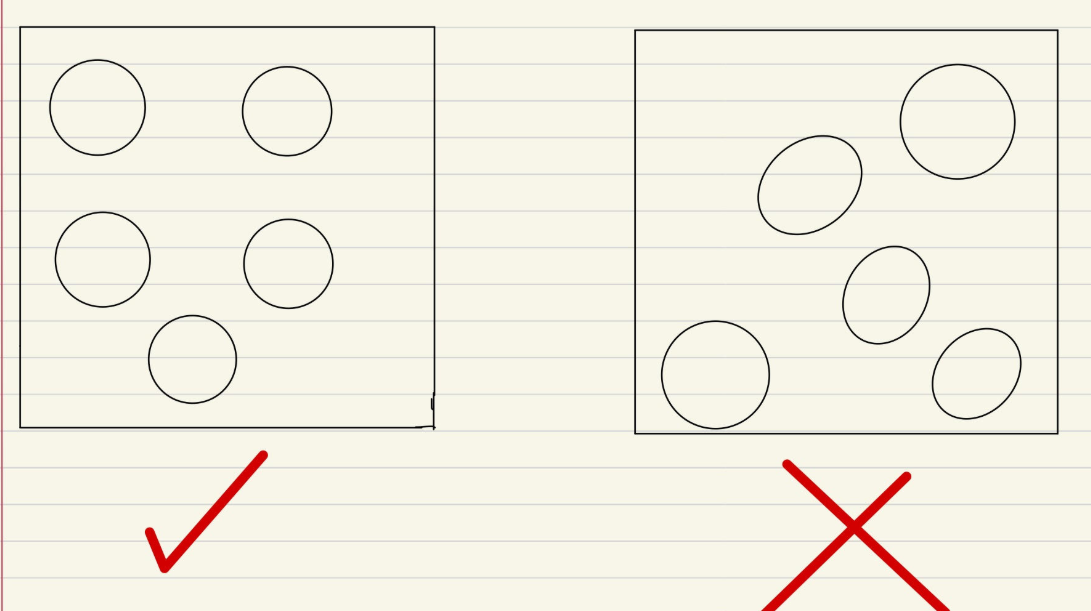
The second game was adequate for learning numbers; however, Travis’s motor skills prevented him from being successful in the activity. However, this fact does not mean that the game was ineffective because the process helped the boy to learn to count and develop manual dexterity. Moreover, the game seemed exciting, and the boy was pleased while playing it. Therefore, as long as parents do not expect immediate results, the game is to be effective in the long run.
Suggestions and Advice
The numbered car park activity is to be simplified in order to improve the learning outcomes. The dots on the cars should be put in shapes, as proposed by Papic et al. (2011). Additionally, during the second activity, parents are recommended to emphasise Travis’s progress in developing manual dexterity because perceived physical competence has a significant impact on fundamental motor skills in preschool children (Robinson, 2011). In summary, minor adjustments to observed affectivities should be made.
New activities are to be introduced to enable the child to recognise and copy the patterns of an object different in shape, size, and colour. For instance, the game used during the Mathematics Assessment Interview in the first context can be used. Parents can play with teddy bears by making patterns and asking children to repeat them. The activity is approved by education authorities and children seem to enjoy playing with such toys, which positively affect the outcomes.
The parents are also encouraged to listen and sing songs with numbers, such as “ten little ducks.” According to McDonel (2015), music can be helpful in developing early mathematics skills, including counting and patterning. Moreover, music can support individual and social construction of knowledge and global mental process (McDonel, 2015). Parents can be creative in the choice of songs, depending on the child’s preferences.
Finally, learning mathematical skills should be a continuous process, which is emphasised in everyday activities. According to Muir (2016), encouraging children to use their mathematical skills in everyday situations away from a regular learning environment can significantly improve the outcomes. In particular, Travis’s parents may ask him to count how many leaves are on a flower or how many apples are on the table. They can also encourage the boy to organize different kinds of objects, such as spoons or raisins into patterns. All the recommendations described above are evidence-based suggestions that will help Travis develop his mathematical skills.
Conclusion
Choosing an adequate strategy for developing early mathematical skills in preschoolers is vital for improving learning outcomes. The observations described in the present paper suggest that teaching strategies are to be altered according to a child’s developmental stage and individual characteristics, including cultural background and preferences. While most of the learning is done during formal lessons, parents should make an effort to promote the utilization of mathematical skills in everyday situations. Moreover, creativity is encouraged since alteration of tasks can generate interest in children and learning mathematics may become a joyful process, which is central for improving learning outcomes.
Appendix A: MAI Assessment interview record Sheet: Foundation detour
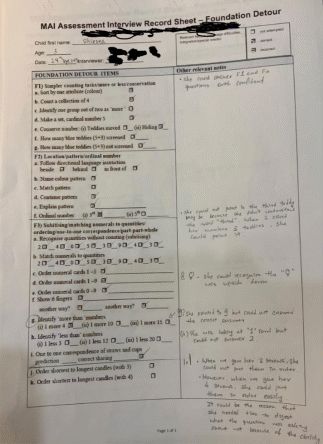
Appendix B: Activity with Teddies
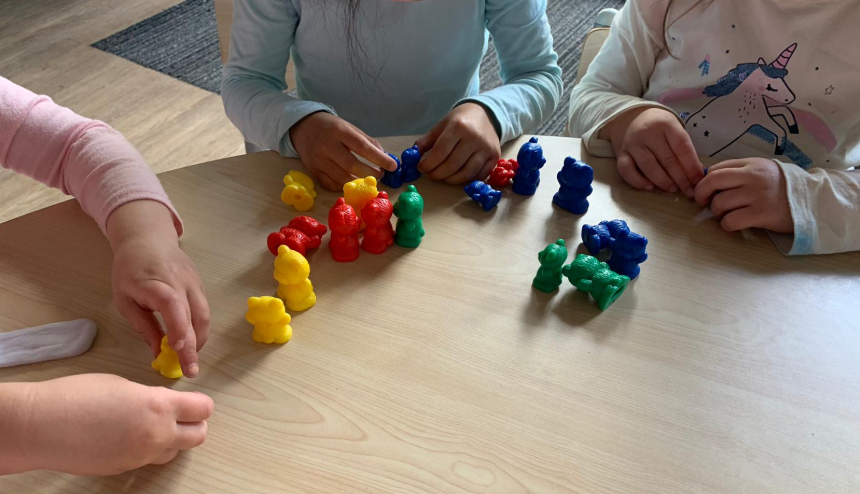
Appendix C: Ordering Straws with Shiesta
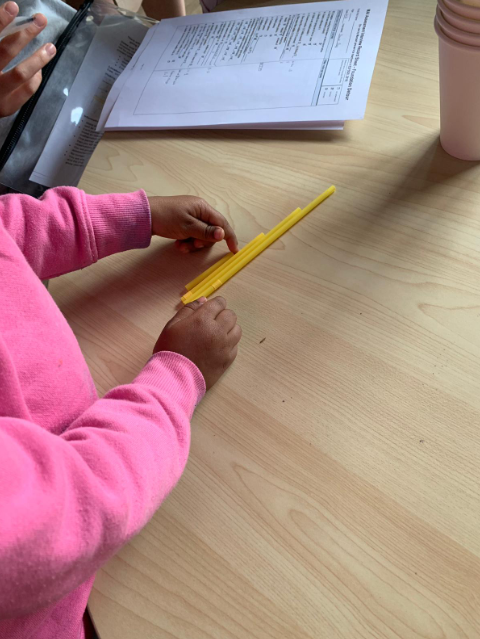
Appendix D: The Second Activity with Travis
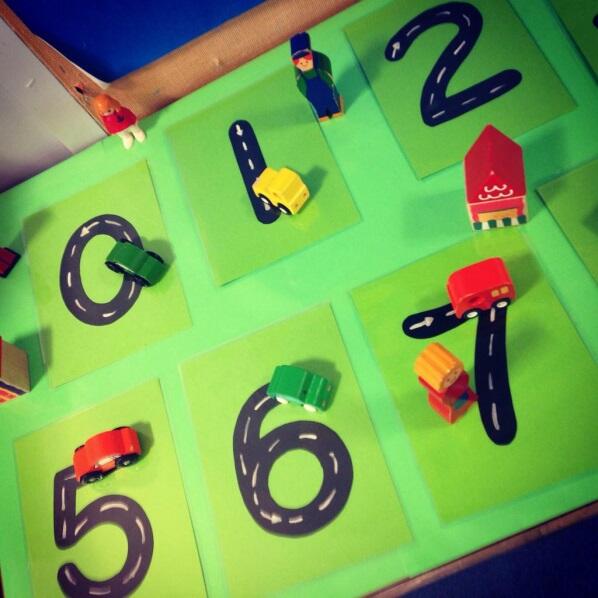
References
Australian Curriculum, Assessment and Reporting Authority. (n.d.). F-10 Curriculum: Mathematics. Web.
Beyranevand, M. (2016). 6 ways to help students understand math. Web.
Department of Education and Early Childhood Development. (2010). Key Characteristics of Effective Numeracy Teaching P-6. Melbourne, Australia: Department of Education and Early Childhood Development.
Han, H. S., & Thomas, M. S. (2010). No child misunderstood: Enhancing early childhood teachers’ multicultural responsiveness to the social competence of diverse children. Early Childhood Education Journal, 37(6), 469-476.
Hardy, L. L., King, L., Farrell, L., Macniven, R., & Howlett, S. (2010). Fundamental movement skills among Australian preschool children. Journal of Science and Medicine in Sport, 13(5), 503-508.
Jacobi-Vessels, J. L., Brown, E. T., Molfese, V. J., & Do, A. (2016). Teaching preschoolers to count: Effective strategies for achieving early mathematics milestones. Early Childhood Education Journal, 44(1), 1-9.
Lachance, A. (2007). Family Math Nights: Collaborative Celebrations of Mathematical Learning. Teaching Children Mathematics, 13(8), 404-408.
McDonel, J. (2015). Exploring learning connections between music and mathematics in early childhood. Bulletin of the Council for Research in Music Education, (203), 45.
McDonough, A., & Clarke, D. (2003). Describing the Practice of Effective Teachers of Mathematics in the Early Years. International Group for the Psychology of Mathematics Education, 3, 261-268.
Muir, T. (2016). Out of the classroom, into the home. Teaching Children Mathematics, 22(8), 496-504.
Papic, M. (2007). Promoting repeating patterns with young children-More than just alternating colours! Australian Primary Mathematics Classroom, 12(3), 8-13.
Papic, M. M., Mulligan, J. T., & Mitchelmore, M. C. (2011). Assessing the development of preschoolers’ mathematical patterning. Journal for Research in Mathematics Education, 42(3), 237-269.
Robinson, L. E. (2011). The relationship between perceived physical competence and fundamental motor skills in preschool children. Child: Care, Health and Development, 37(4), 589-596.
Soltész, F., Szűcs, D., & Szűcs, L. (2010). Relationships between magnitude representation, counting and memory in 4-to 7-year-old children: A developmental study. Behavioral and Brain Functions, 6(1), 13-27.
Spilt, J. L., Koomen, H. M., & Harrison, L. J. (2015). Language development in the early school years: The importance of close relationships with teachers. Developmental Psychology, 51(2), 185-196.
Warren, E., & Cooper, T. (2006). Using repeating patterns to explore functional thinking. Australian Primary Mathematics Classroom, 11(1), 9-14.